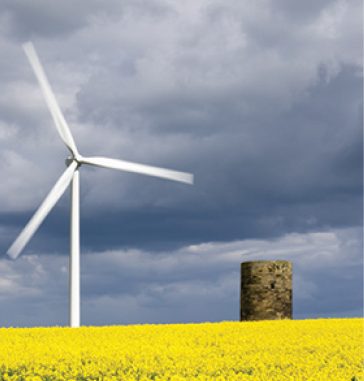
In 2020, the wind energy segment in India incurred huge losses owing to the Covid-19 pandemic. Apart from the pandemic, the segment faced issues such as lower energy generation due to slower wind speeds and cyclones.
A look at the impact of climatic uncertainties on the wind energy segment…
Much like all the other impacts of climate change, slower wind speeds are not an abrupt occurrence. Researchers from Harvard University and China’s National Climate Center analysed wind and atmospheric data for the years 1980-2016 to find that the potential energy production of windmills fell by about 13 per cent during the period. The study also concluded that this trend would continue. Notably, in the last monsoon period (June-September 2020), the Central Electricity Authority reported that wind generation had fallen by 43 per cent over the same period in 2019. Further, the Council on Energy, Environment and Water (CEEW) found that wind power generated in the country in 2020 fell by 24 per cent over 2019.
Typically, monsoon wind speeds range between 23 km and 29 km per hour. In the 2020 monsoon season, the average wind speed was 20-27 km per hour, the lowest till date. This is a cause for concern because wind generation is at its peak during the monsoon season, accounting for about 74 per cent of the annual wind generation. This decline in generation was especially higher in the western states of Gujarat, Rajasthan and Maharashtra. Tamil Nadu, which typically receives winds later in the year, reported a 12.5 per cent decline in wind generation during the monsoon and 8 per cent during the year overall. In addition to lower wind speeds, the country was hit by five cyclones in 2020, which impacted many wind power plants, especially in the south/south-east. The series of cyclones forced many operators to shut down their turbines to avoid damage. Therefore, operators were not able to tap the high wind speeds in the region.
Promising signs
In 2021, so far, wind generation in India has picked up remarkably. As per the recently released Wind Anomaly Map by ArcVera Renewables, the south-west monsoon in 2021 was much more favourable than the previous year. Further, in Gujarat, Kerala and parts of eastern India, wind speeds were above average. Gujarat has particularly benefited from the fast winds on the western coast, recording an all-time high wind power generation in July. However, the report noted that this revival of wind speeds and energy generation will not compensate for the financial losses incurred by stakeholders in July 2020.
Denying the evidence that there may be a decline in wind energy potential over time, some scientists argue that the lower wind speed recorded in India last year was not an isolated event. Speaking at a webinar on changing wind speeds organised by the CEEW, Dr K. Balaraman, director general of the National Wind Energy Institute, stated that the lower wind speeds in 2020 were merely a part of the “natural weather cycle”. Further, he went on to state that such an event is likely to occur every eight or nine years and can be easily predicted.
Potential solutions and outlook
The year 2020 was extremely challenging for the wind segment given the huge fall in energy generation. For wind developers in India, the lower generation was coupled with other roadblocks such as non-allocation of land, transmission challenges, curtailment and delayed payments. While it may not be possible to compensate for these losses in the short run, the impacts of these extreme weather events can be minimised, going forward.
For one, there is a need to build a strong database with long-term data for wind speed and energy generation. Currently, a large part of this data is limited to certain regions and maintained only by wind turbine operators and private developers. Further, there is a need to build a centre for excellence for wind energy in India where all stakeholders can work together to accurately predict wind patterns. In this way, the segment can plan for periods when wind speed is expected to be lower. India must explore options of repowering old wind turbines with newer and more efficient models.
Net, net, monsoons in India have been erratic and cyclonic disturbances are becoming a common occurrence, which is impacting the wind segment. In order to weather these storms and continue contributing to the energy transition over the next few decades, it is important that corrective measures are taken to adapt to the new realities.
By Rithvik Kumar


